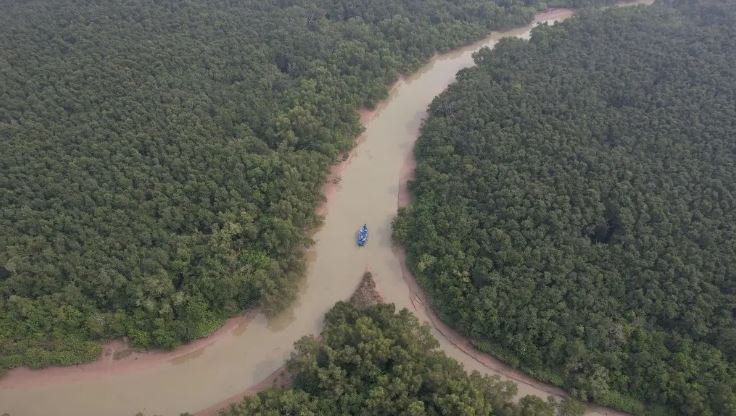Rajnagar: An area measuring 497.67 sq. km with an extent of 0.10 km to 8.7 km around the boundary of Bhitarkanika National Park, Bhitarkanika Wildlife Sanctuary and Gahirmatha (Marine) Wildlife Sanctuary has been declared as Eco-sensitive Zone (ESZ).
The Union Ministry of Environment, Forest and Climate Change (MoEF&CC) of the Central government had issued a draft notification September 6, 2023, which was published June 9, 2024. As per the notification, proposals, objections and suggestions are invited within 60 days of publication as it will come into force thereafter. This has pushed residents of as many as 205 villages in the ESZ to a state of panic and apprehension. By delineating an ESZ spanning from 0.10 km to 8.7 km around the three protected areas of Mangrove Forest (Wildlife) Division – Bhitarkanika Wildlife Sanctuary (1975), Gahirmatha Marine Sanctuary (1997), Bhitarkanika National Park (1998), encompassing an area of 497.67 sq. km, the government aims to protect critical habitats, migration routes, and nesting sites. The sanctuary is home to 88 species of rare mangrove species and a famed crocodile project. Bhitarkanika boasts of the largest population of estuarine crocodiles in India and is renowned for its reptilian diversity.
It is recognised as a wetland of international importance under the Ramsar convention. Gahirmatha is globally celebrated for the mass nesting of Olive Ridley Sea Turtles. Home to 61 species of invertebrates, 20 species of fish, five species of amphibians, 42 species of reptiles, more than 280 species of birds and 28 species of mammals, the region is teeming with biodiversity, making it imperative to conserve the ecosystem. As many as 205 villages — 52 in Rajnagar, eight in Pattamundai, 38 in Mahakalapara, 32 in Aul, 30 in Rajkanika blocks in Kendrapara and 45 villages in Bhadrak district’s Chandbali, Bansada and Tihidi blocks — fall under the specified area or ESZ. After the publication of the final gazette of the ESZ, curbs and regulations will be enforced to control noise pollution, air pollution, land usage and management, water usage, waste management and vehicular traffic. It has also been informed that new construction in the ESZ will be restricted, while tourismbased programmes will also be taken up as per guidelines.
To effectively manage the ESZ, the state government will prepare a Zonal Master Plan within two years with inputs from the local residents. It will be prepared in consultation with the state government’s Forest and Wildlife, Environment, Urban and Rural Development, Tourism, Municipality, Revenue, Agriculture, Irrigation and Flood Control, Public Works and Panchayati Raj departments based on the environmental laws of the Central and state government. The gazette mandates setting up of a monitoring committee by the Central government for the environmentally sensitive areas. The Kendrapara Collector will be the chairperson of this committee while representatives of Bhadrak Collector and SP, Kendrapara SP, NGO members, environmentalists nominated by the state government, representative of SPCB secretary, Bhadrak and Rajnagar DFOs will be its member secretaries. The ESZ designation serves to safeguard this unique and sensitive region from a host of threats and seeks to strike a balance between conservation and development, recognising the need to preserve the eco-system while allowing for sustainable human activities.
